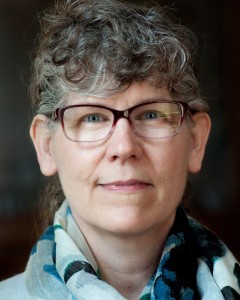What Rochester can learn from Louisville
- likoau
- Apr 13, 2015
- 3 min read
New York State just can’t quite face the fact that until it deals with high poverty schools, its weakest performing schools cannot be turned around.
On the one hand, Gov. Andrew Cuomo, the State Ed department and the Regents have acknowledged this year that we have two school systems – one for the rich and one for the poor. They have endorsed efforts to achieve socio-economic integration across district lines (the Rochester City School District has submitted to Albany three grant requests, each aimed at integrating high-poverty schools).
Mark Hare is a member of the GS4A leadership team
On the other hand, the just approved state budget calls for a state takeover of 18 underperforming schools (including four in Rochester) unless their districts can turn them around – which, of course, they cannot. So prepare yourself for more Albany attacks on administrators and teachers for their inability to fix schools that Albany (and the entire education research establishment) knows cannot be fixed without integration.
As a new report from the Albany-based Fiscal Policy Institute succinctly puts it: “Teachers cannot control the backgrounds of their students, and they cannot overcome the resulting disadvantages on their own. In addition to an adequate increase in aid, broad-based solutions that address the academic, social, and health needs of students and engage the local community are needed.”
On the question of engaging the wider community, check out this March 27 piece by Alana Semuels, staff writer for The Atlantic: “Louisville–the city that believed in desegregation.”
Semuels explains that in the early 1970s Detroit and Louisville faced similar problems with high poverty, racially isolated and underperforming urban schools. An integration plan in Detroit was famously overturned by the US Supreme Court, but Louisville found a way to integrate, as did several other (mostly Southern) urban communities.
High-poverty districts that failed to integrate, Semuels writes, face “growing inner-city crime, low academic achievement levels for black children who live in the city, and a hollowing out of the city by middle-class families.” Sound familiar?
With a city-suburb integration plan, Louisville slowly built a school system that affords every child an excellent school (although, as she notes, there was initial opposition to the plan, and there continue to be parents who are dissatisfied that their children cannot always attend their first choice of schools).
The Louisville plan engaged the larger community in the struggle for educational equity, which is just what upstate New York cities must do. Early on, Semuels says, “Thousands of protesters rallied against busing at the district’s schools, protesting and vandalizing police cars until the governor called in the Kentucky National Guard to supervise buses for the first few days. But something strange happened as the integration plan continued. Many of the residents’ fears failed to materialize, and after a few years the protests ceased.
“It’s as though ‘people are amazed to discover that people from another race or ethnic group are actually pretty similar to them,’ said Gary Orfield, the co-director of the Civil Rights Project at UCLA.”
I do not wish to suggest that socio-economic integration is a magical formula that delivers an instant fix. It is, more accurately, an essential condition for real equality of opportunity and the steady improvement by students who otherwise would be very likely to fail.
And, there are secondary benefits – quite apparent in Louisville, and absent in Detroit.
Samuels cites Genevieve Siegel-Hawley, who conducted a study comparing housing segregation in four cities that had different school-integration policies. “When parents decide to buy a home, they often make choices based on neighborhood schools. This has an effect on home prices: One Connecticut study found that buyers were willing to pay $7,468 more for a house near a less diverse school. But parents in Louisville know that whether they buy a house in the city or the suburbs, their child will go to a school that has similar resources—and racial breakdown—as other schools in the district.
“ ‘When families are thinking about moving around the metro area, they know that any neighborhood is going to be linked to a school with a racial composition that reflects the broader-metropolitan area,’ ” she (Siegel-Hawley) said. ‘It helps disentangle the school-housing relationship.’ ”
Will New York start to see the wisdom in Louisville’s choices?







Comments